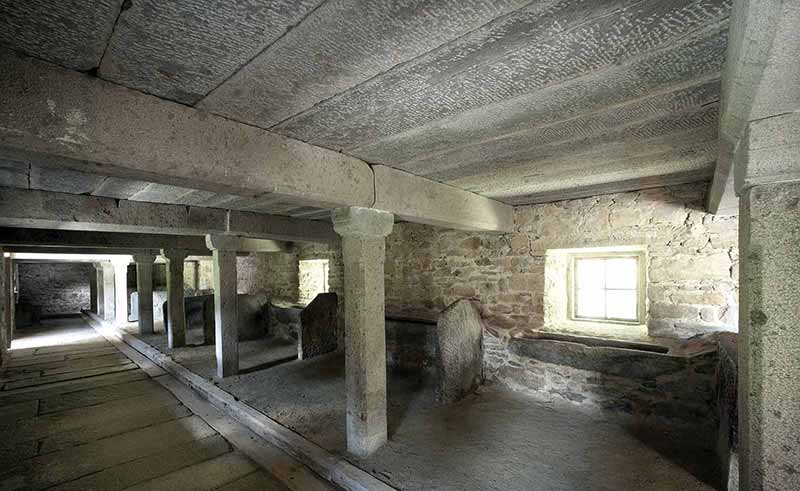Almost everything in this stable that you see in front of you is made of granite: large slabs form the ceiling, which are supported by granite pillars. The floor of the feeding passage, the bars and the sections of the stalls: everything is made of granite. This example, built in 1789, comes from Rosenberg, a municipality now known as Jandelsbrunn. It exists today because it’s found a second life in the Finsterau Open-Air Museum.
The granite stables found in the southern Bavarian Forest are a prime example of the so-called “petrification” that began in rural home building around 1800. A veritable wave of new construction replaced a large proportion of the old wooden houses with stone buildings. A shortage of wood, the boom in agriculture, and rising fire insurance premiums for wooden buildings intensified this development.
Elaborate stonemasonry work was carried out, particularly on portals and door frames. This was a way of showing one’s status as a wealthy farmer or citizen. After all, the granite was usually free because it could be obtained from one’s own fields and forests.
Many public contracts also fueled the natural stone boom of the 19th century. In the large bridge-building projects in Passau over the Danube, Inn and Ilz, as well as on the banks of the Danube and in the construction of the log-driving dam near Hals: Hauzenberg granite was used everywhere.
But that was not enough! The construction of numerous churches brought a boom to the stonemasons and stonecutters in the southern Bavarian Forest. They often set up their own quarries to procure the huge amount of raw stone that was needed.
The way of working with stone had hardly changed over the centuries. In a moment, I would like to tell you about this old world of work. Walk around the large tracery window to the two window openings. See you there!
